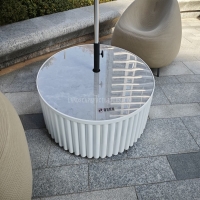Welcome to the website for landscape facilities products and knowledge.
How does the table’s design account for varying levels of user interaction frequency?
In the realm of digital interfaces, table design has evolved beyond static data presentation to become intelligent systems that dynamically respond to user interaction patterns. Modern tables employ sophisticated design strategies that account for how frequently users engage with different data elements, creating fluid experiences that balance information density with usability.
High-frequency interaction zones within tables typically feature enhanced visual treatments. Designers implement progressive disclosure techniques where frequently accessed rows or columns receive prominent visual hierarchy through strategic use of color contrast, typography weight, and interactive elements. These high-traffic areas often incorporate hover states, expandable sections, and quick-action buttons that remain subtly hidden until needed, reducing cognitive load while maintaining functionality.
For medium-frequency interactions, tables employ contextual adaptations. This includes smart collapsing of secondary information columns that expand upon user demand, preserving screen real estate while keeping relevant data accessible. Middle-tier interaction elements might feature moderate visual prominence—enough to guide users without overwhelming the interface.
Low-frequency interaction areas undergo significant simplification. Designers often collapse these sections into summarized views or implement "show more" triggers that reveal detailed data only when specifically requested. This strategic reduction of visual elements prevents information overload while maintaining comprehensive data availability for occasional reference.
The most advanced table designs incorporate machine learning algorithms that analyze user behavior patterns over time. These systems automatically adjust interface elements based on observed interaction frequency, potentially highlighting previously overlooked data columns that gain relevance through changing usage patterns. This creates self-optimizing interfaces that evolve with user needs.
Responsive design principles further enhance this adaptability across devices. Tables transform their layout and interaction models based on screen size and input method, with touch interfaces prioritizing different interaction patterns than mouse-driven desktop experiences. The table's structural flexibility ensures optimal usability regardless of how users engage with the data.
Through these multifaceted approaches, contemporary table designs successfully navigate the complex challenge of serving diverse user needs while maintaining clean, organized presentations of complex information. The result is interfaces that feel intuitively responsive to individual usage patterns while remaining accessible to both power users and occasional visitors.
Related search:

Recommendation
Round metal tube border design table with tempered glass or granite countertop on the top.